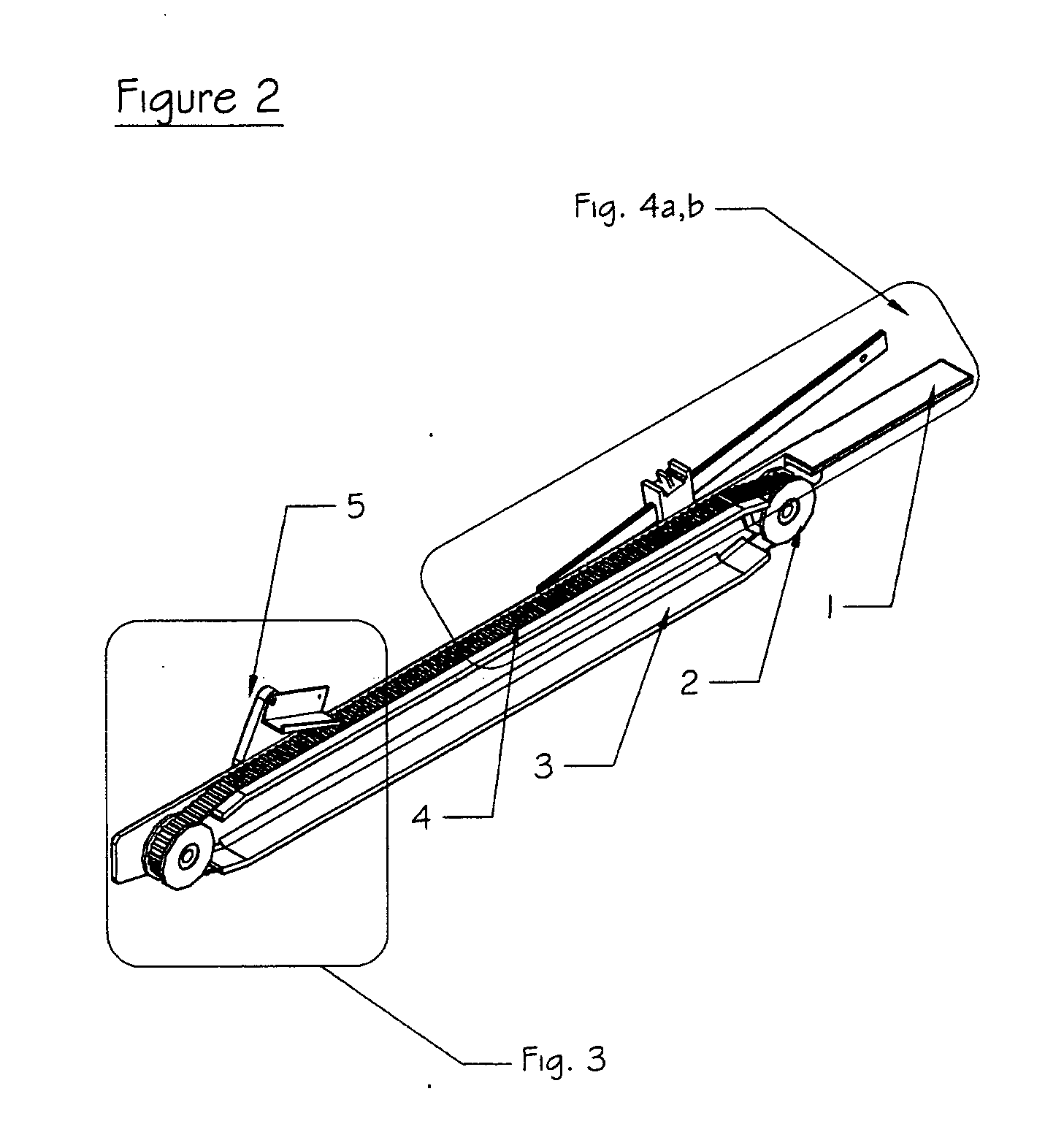Baby Evacuation Device
a technology for evacuating devices and babies, which is applied in the direction of building rescue, transportation and packaging, wheelchairs/patient conveyances, etc. it can solve the problems of not being able to safely evacuate multiple babies, the ratio of staff to babies is quite low, and the evacuating device cannot be used, so as to improve the efficiency of evacuating or draining, increase the pocket size, and manipulate the device quickly and efficiently
- Summary
- Abstract
- Description
- Claims
- Application Information
AI Technical Summary
Problems solved by technology
Method used
Image
Examples
Embodiment Construction
[0013]The main tubular frame as shown in FIG. 1-1 is the main support system. The tubular frame is one solid entity that requires no assembly. There are unique bends, as shown in FIG. 1-2, at the top end (operator end) to allow the operator to walk with the device at arms length and descend the stairs safely, viewing the steps as they descend. The reverse brake handle, as shown in FIG. 1-3 is disengaged when the operator squeezes the handle to the main frame. Only when the operator releases the handle will the brake under pressure make contact with the track and stop the descent of the device. There is a nylon strap, as shown in FIG. 1-4, which holds the brake bar a comfortable gripping distance away from the main frame handle.
[0014]The six infant head-rests consist of several parts. The main portion of the headrest is the custom adjustable U-shaped head rest, as shown in FIG. 1-5, with the loop and hook system stitched to the bottom. A pair of loop and hook system straps, as shown ...
PUM
 Login to View More
Login to View More Abstract
Description
Claims
Application Information
 Login to View More
Login to View More - R&D
- Intellectual Property
- Life Sciences
- Materials
- Tech Scout
- Unparalleled Data Quality
- Higher Quality Content
- 60% Fewer Hallucinations
Browse by: Latest US Patents, China's latest patents, Technical Efficacy Thesaurus, Application Domain, Technology Topic, Popular Technical Reports.
© 2025 PatSnap. All rights reserved.Legal|Privacy policy|Modern Slavery Act Transparency Statement|Sitemap|About US| Contact US: help@patsnap.com



